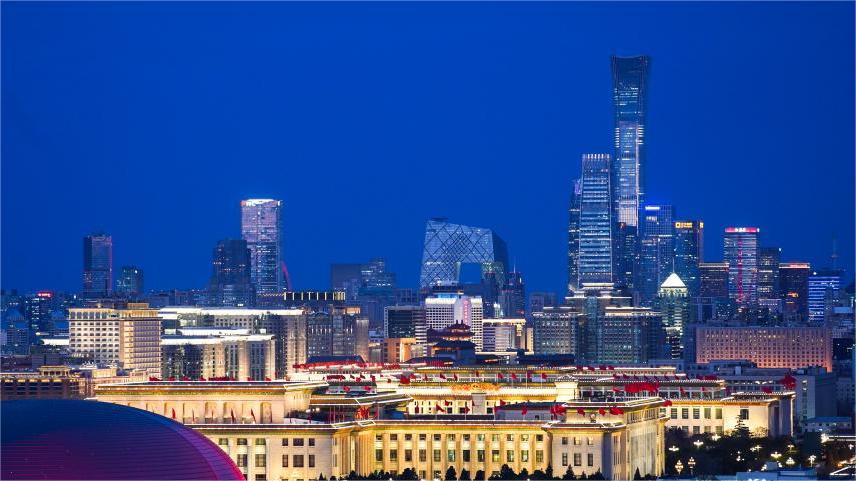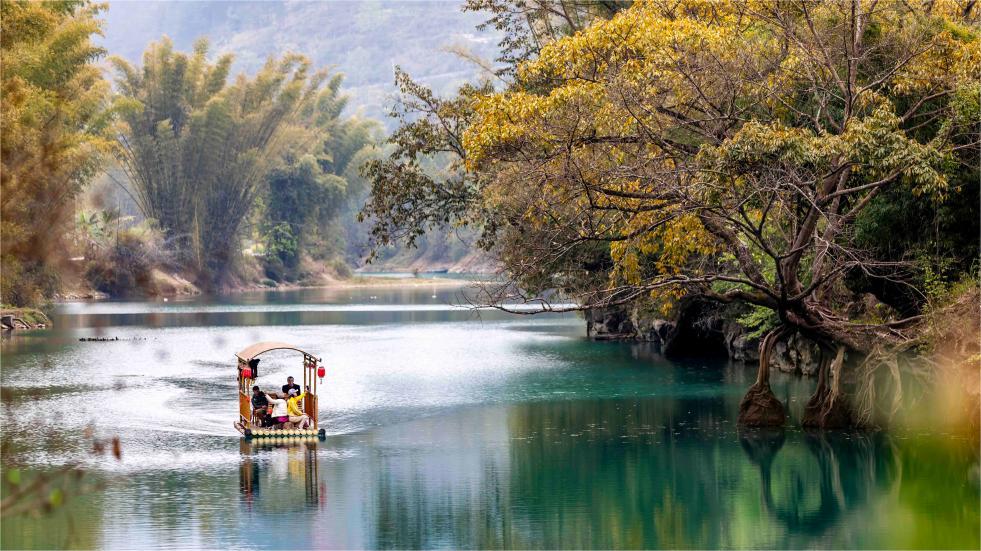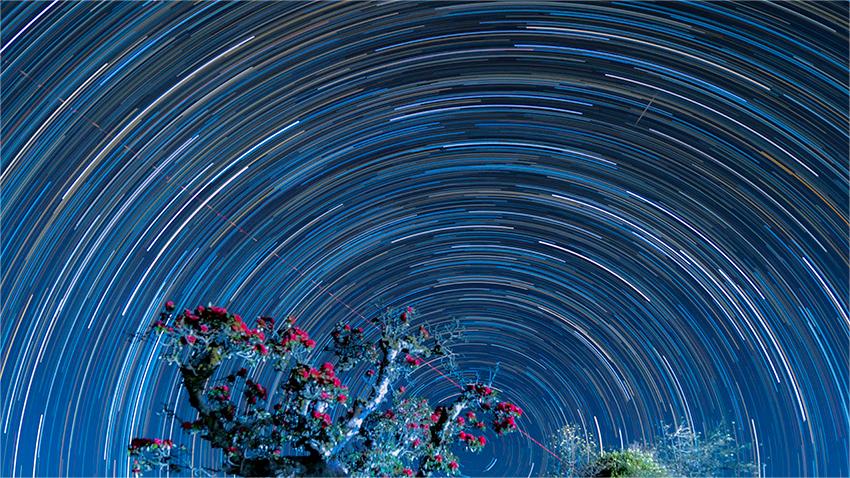Thriving tourism brings prosperity to China's border city of Heihe
The flourishing development of border tourism, winter tourism, and wellness tourism has brought prosperity to Heihe, a city situated on the China-Russia border in northeast China's Heilongjiang Province.
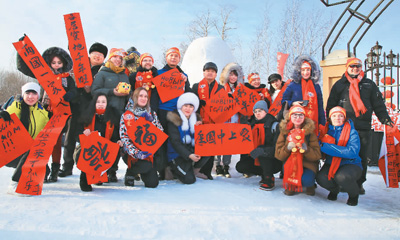
Photo shows Russian tourists during a China-Russia cultural exchange activity held before the Spring Festival in 2024 in Aihui district, Heihe city, northeast China's Heilongjiang Province. (Photo courtesy of the publicity department of the Communist Party of China Heihe municipal committee)
Heihe and Russia's Blagoveshchensk face each other across the Heilongjiang River. Since the resumption of visa-free group tours between China and Russia in September 2023, Heihe has seen visits from an increasing number of people from both countries. A simple boat ride allows for easy movement between the two nations.
The city, which boasts a rich historical culture, diverse cuisines and a myriad of Chinese goods, has become a top tourist destination for many Russian citizens. As of Dec. 31, 2023, Heihe had received over 2,100 tourist groups consisting of 27,500 tourists under the mutual visa exemption policy.
Before the Spring Festival, a China-Russia cultural exchange activity was held in Xinsheng Oroqen ethnic township, Aihui district, Heihe. During the activity, Russian tourists participated in entertainment activities featuring ice and snow such as a horse-drawn sleigh ride, and experienced the charm of the folk activities of China's Oroqen ethnic group.
"While inheriting traditional Chinese folk customs, the activity also incorporates tourism forms like ice and snow tourism, wellness tourism, and educational tours," said Wu Yanling, head of the bureau of culture, radio, television and tourism of Aihui district.
Wu added that the aim is to advance the application and building of a China-Russia border tourism pilot zone in the city and implement a plan to promote inbound tourism from Russia.
Data from the Heihe municipal bureau of culture, radio, television and tourism shows that in 2023, the city's tourism revenue surged 66.53 percent year on year, with border tourism revenues reaching 564 million yuan (about $78.45 million).
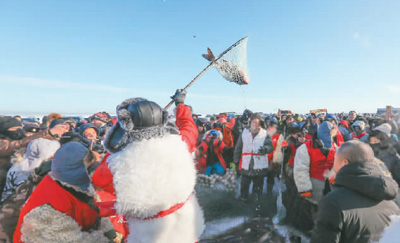
People catch fish in the Wudalianchi scenic area in Heihe city, northeast China's Heilongjiang Province. (Photo courtesy of the publicity department of the Communist Party of China Heihe municipal committee)
Heihe's natural resources provide a valuable asset for developing wellness tourism. In early January this year, over 40 Russian youths visited the Heihe Hospital of Traditional Chinese Medicine to experience Chinese medical culture and treatments during a winter camp.
Yu Baokai, director of the hospital's department of traditional Chinese medicinal herbs, introduced various Chinese medicinal herbs to them.
"This year, our hospital will focus on establishing a medical promotion center for Russia, showcasing historical moments of China-Russian medical exchanges and cooperation, and building a wall exhibiting Chinese medicine culture in both Chinese and Russian," said Yin Bo, deputy director of the hospital.
Known for its magnificent volcanic landscapes, the Wudalianchi scenic area is a 5A-rated tourist attraction in Heihe. Wudalianchi is home to one of the world's three finest cold springs, along with France's Vichy and Russia's Narzan mineral springs. Mineral water from Wudalianchi contains more than 20 microelements beneficial to the human body.
Various resorts, sanatoriums, and homestays surrounding the cold springs in Wudalianchi attract numerous domestic and international tourists for sightseeing, vacation, and wellness each year, and are particularly popular among Russian tourists.
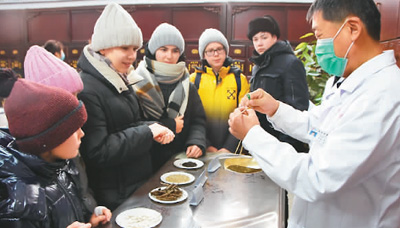
Russian students learn about traditional Chinese medicinal herbs at the Heihe Hospital of Traditional Chinese Medicine in Heihe city, northeast China's Heilongjiang Province. (Photo/Dou Manyou)
Additionally, the long winter season and unique ice and snow resources provide natural conditions for the cold-area car testing industry in Heihe. According to preliminary statistics, over 3,600 people and more than 2,800 vehicles will come to Heihe for car testing this year. The booming cold-area car testing industry drives the development of sectors including tourism, catering, and accommodation.
"After the car testing season ends, we usually purchase large quantities of black fungus, wild vegetables, and other organic and green food as gifts for family members and friends," said Zou Xiong, an engineer from an automaker who has been coming to Heihe for car testing for 20 consecutive years.
Data shows that the cold-area car testing industry brings over 600 million yuan in consumption to Heihe each winter season.
"During the car testing season, we will integrate car testing with the display of folk culture and arts, winter tourism, traditional festivals and driving experiences, and host relevant forums, competitions and other activities, so as to effectively extend the industrial chain of the cold-area car testing industry," said Wang Yulong, director of the Heihe municipal industry and information technology bureau.
Photos
Related Stories
Copyright © 2024 People's Daily Online. All Rights Reserved.






